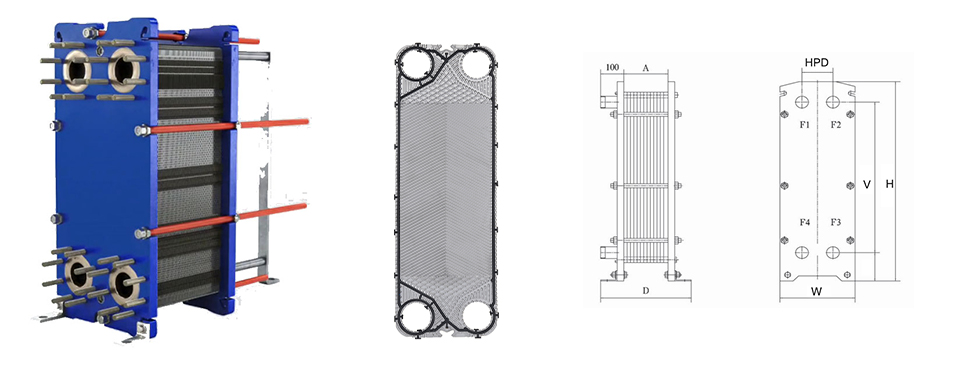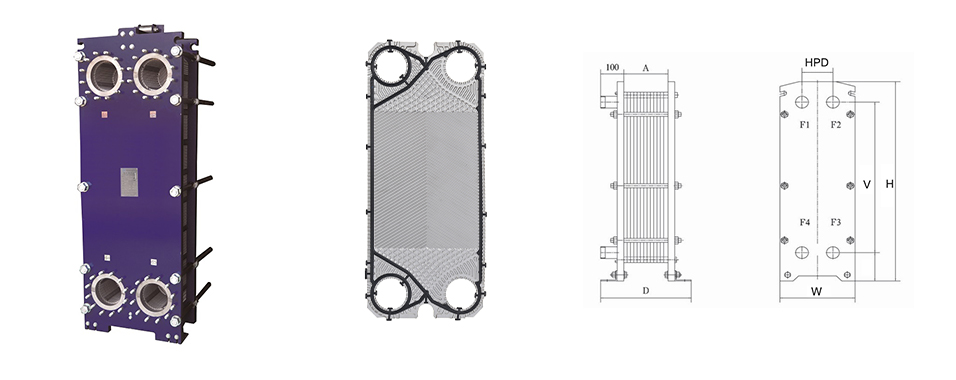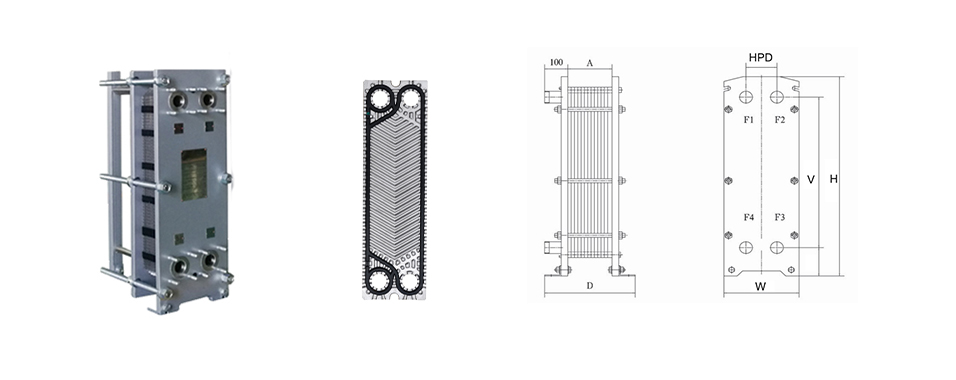Classification of tranter heat exchanger
1. Hybrid heat exchanger
The main working principle of this type of heat exchanger is that the two media transfer heat to each other through contact to achieve heat transfer. The contact area directly affects the heat transfer. The medium of this type of heat exchanger is usually a gas and the other is a liquid. , It is mainly heat transfer equipment with cooling water tower equipment as the main body, but usually involves mass transfer, so it is difficult to distinguish the relationship with the tower device. It is usually classified as tower equipment, and the cooling water tower used in chemical plants and power plants is the most typical Hybrid heat exchanger.
2. Energy storage heat exchanger (abbreviated as accumulator)
The principle of this kind of heat exchanger is that after the heating medium reaches a certain temperature by heating the solid substance, the cold medium is heated by the solid substance, and the heat and cold alternately make it reach the purpose of heat transfer. It is mainly used to recover and utilize the heat of high-temperature exhaust gas.
3, partition type heat exchanger
The principle of this type of heat exchanger is that the cold and hot two media are separated by a solid partition, and heat is exchanged through the partition. The amount of this type of heat exchanger is very large, accounting for 99% of the total. According to different structures, it can be divided into tube type, plate type and other types.
Classification of tranter heat exchanger you can browse related products and initiate consultations on our website.
The main working principle of this type of heat exchanger is that the two media transfer heat to each other through contact to achieve heat transfer. The contact area directly affects the heat transfer. The medium of this type of heat exchanger is usually a gas and the other is a liquid. , It is mainly heat transfer equipment with cooling water tower equipment as the main body, but usually involves mass transfer, so it is difficult to distinguish the relationship with the tower device. It is usually classified as tower equipment, and the cooling water tower used in chemical plants and power plants is the most typical Hybrid heat exchanger.
2. Energy storage heat exchanger (abbreviated as accumulator)
The principle of this kind of heat exchanger is that after the heating medium reaches a certain temperature by heating the solid substance, the cold medium is heated by the solid substance, and the heat and cold alternately make it reach the purpose of heat transfer. It is mainly used to recover and utilize the heat of high-temperature exhaust gas.
3, partition type heat exchanger
The principle of this type of heat exchanger is that the cold and hot two media are separated by a solid partition, and heat is exchanged through the partition. The amount of this type of heat exchanger is very large, accounting for 99% of the total. According to different structures, it can be divided into tube type, plate type and other types.
Classification of tranter heat exchanger you can browse related products and initiate consultations on our website.








